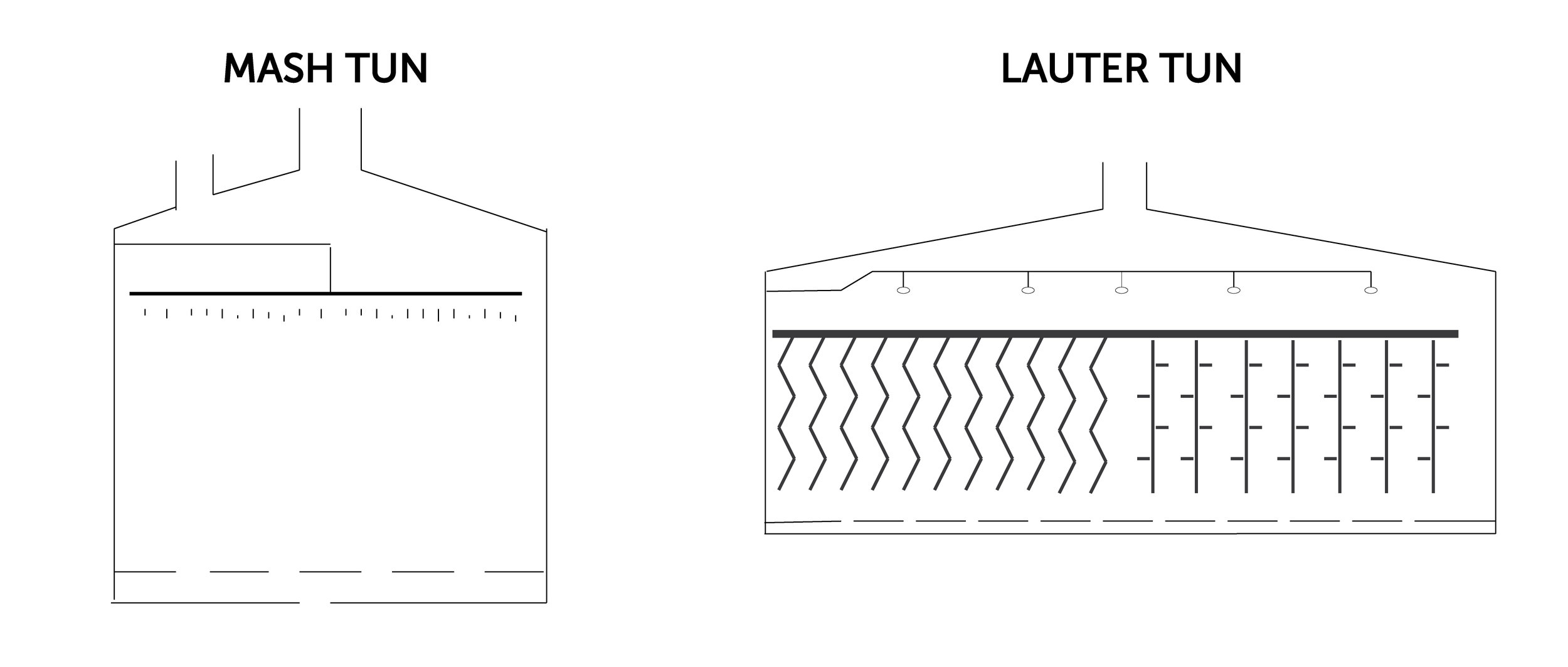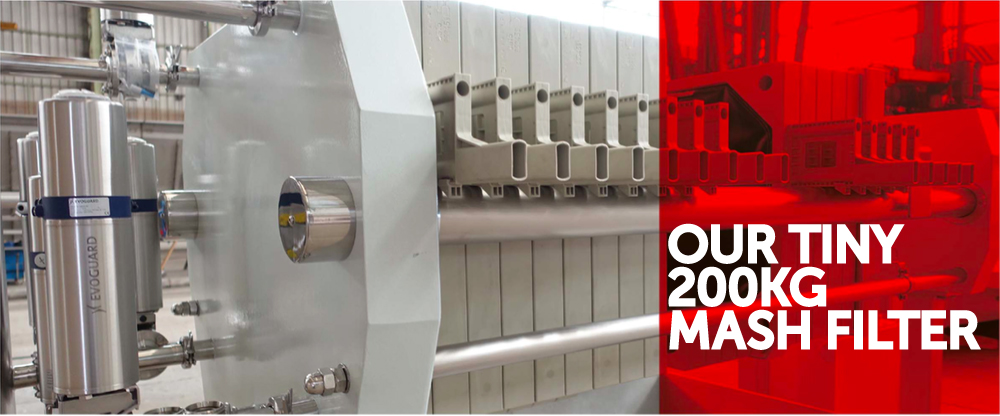So We're Building a Brewery Part 3. - Mash Filter Madness

Generally in microbrewing you’ve got two options on your kit setup when it comes to mashing. Either a:
- Mash tun where the malt and hot water go in for a ‘single (temperature) infusion’, convert and the wort is run off from the same vessel
- Mash Mixer & Lauter setup whereby the mash conversions happen in one vessel undergoing a range of temperature changes before heading off to a separation vessel like a lauter for wort runoff.

Horrifically simplified drawings
A Mash Tun is the most used in the game. They’re reliable, cost effective and have less chance of gumming up or ‘sticking’ due to the design of the plates as well as the lack of continuous agitation which can sometimes cause separation issues later. Their downside is they give you less extract and when they do block, you’re fucked.
A Lauter Tun setup is what’s most used in German microbreweries and industrial (macro) brewing as they offer high extracts and the separate mash mixing vessel gives you more consistency of sugars and fermentations. They also often provide a better quality wort but not always. As you can see above, they have big rake systems, are shallower and normally have lots of runoff points. Downsides are that they’re slower, very finicky, very hard to engineer well and often take a whole lot of monitoring. But when they block, you’re also fucked.
We’ve mostly worked on a mash mixer / lauter setup as the mash mixer stage is important to us to get that mouthfeel into our lower abv beers, but two of the main issues we’ve encountered has been poor runoff times mainly due to them being designed for other styles. As well as this our love for the mouthfeel that grains like oats and wheat lend our beers tend to gum up some lauters a bit. It’s fine for 1 or 2 brews but a few brews in and you’ll have a long night. When we decided to design the brewery ourselves the big worry I had was getting a lauter tun right. You can get out enough text books on designs and considerations for making a good one but the biggest part of it was the Donald Rumsfeld paradigm of the Unknown Unknowns. Great engineering is something many brewery manufacturers have really built over successive designs or past experience and it’s something we respect hugely. We weren’t going to go to a manufacturer to get a standalone lauter tun while we pieced together the rest of the kit ourselves. So I started to look at different options.

I’d had the pleasure of using the mash filter in the Guinness pilot plant years back when I worked there in the Storehouse and it always fascinated me. One of these hidden mysterious pieces of kit only these macro brewers understood fully while I was mashing away in a picnic cooler in my kitchen. They were indeed the type of kit you’d only see in mega factories, but I remember the wort being the clearest most complex tasty wort I’d ever tasted, and I wanted that. I knew they were pricey, but I wanted to find out how pricey. After a few calls to some of the better known mash filter people I started to get the idea they weren’t really interested in microbrewing. Projects are small, ours was absolutely tiny and they’re used to dealing with macro. Then I got a call back from Landaluce in Spain. They were clearly enthusiastic about us coming over to see it telling me they had made a mash filter for microbreweries but not many craft brewers were really aware of the technology. If we’d take it we’d be the first for them so they wanted to make it happen. We took the trip to Spain a few weeks later, sat down with the team, were happy to fire ahead and it was done. We’re super excited to be getting it in. I’ll explain why -
They’ve got 3 main benefits
1. Extract – On a mash filter you use cereal flour instead of the coarse grist you’d need to mill for a lauter or a mash tun. Getting to all of that flour during separation allows you to get at 100% of that malt goodness. It’s not a huge concern on cost when making beer but it really helps when you’re making really big beers like barleywines and imperial stouts when compared to a mash tun the efficiency can go as low as 60% (ouch)
2. Time – They work way quicker than a lauter tun. Where a lauter tun might take you 3 hours to fully turn around before brewing again, a mash filter will do the same job in ~100mins, allowing us to brew more regularly, adding flex to our small kit.
3. Ease – Mash filters rarely block and you can throw what you want at them provided you’re operating the thing correctly. We can brew with as much oats, wheat and spelt as we want for our New England bangers without worry. This is huge.
So our little mash filter will allow us to mash when we’re ready to go in the vessel, and if we were running the brewery 24hrs we can go up to 14 times a day. We have no intention of doing this much brewing though as we simply can’t be arsed. It’ll present its own challenges which we’ll try document but it’s easily the most exciting part of our kit in waiting. It means more stouts, barleywines and weird cereal grists coming down the line. If it’s good we might even release it.
Next week we’ll go over our tank design and automation.
Tickets for Fidelity are still going with both sessions nearly sold out. Don’t miss out on the big sesh and get yours here before they’re gone.
https://www.eventbrite.com/e/fidelity-beer-festival-2019-tickets-60077753177



